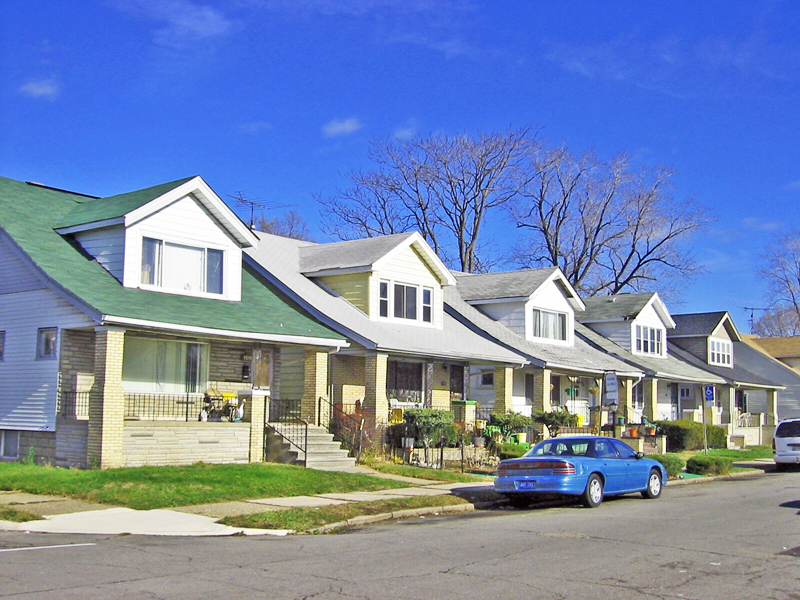

Before Emancipation in 1863, anti-slavery societies developed
and became quite active in most northern towns. Shubael Conant was the founder
and first president—in 1837—of Detroit's Anti-Slavery Society. He
originally owned the land in this area.
Similar to other areas lying far beyond Grand Boulevard, this section of Detroit
was sparsely populated until the automobile boom of the 1920s. A developer sought
to build attractive homes for white-collar Ford workers, but was unsuccessful.
The boom of the 1920s created a much larger prosperous African American population
but, with the exception of a neighborhood near Tireman and Grand River, blacks
were confined by violence and restrictive covenants to the Hastings Street neighborhood.
About 1928, some blacks realized that the lack of white demand meant they would
face few difficulties if they moved to the Conant Gardens area. They did so.
Many built their own homes. After 1934, the Federal Housing Administration approved
federally backed loans for this area since it is a segregated one. A neighborhood
association from that era survives in Conant Gardens.
City of Detroit Local Historic District: Listed
State of Michigan Register of Historic Buildings:
National Register of Historic Sites:
Use in 2004: Residential neighborhood
Photo: Andrew Chandler, December, 2004
Return to Racial History in Detroit